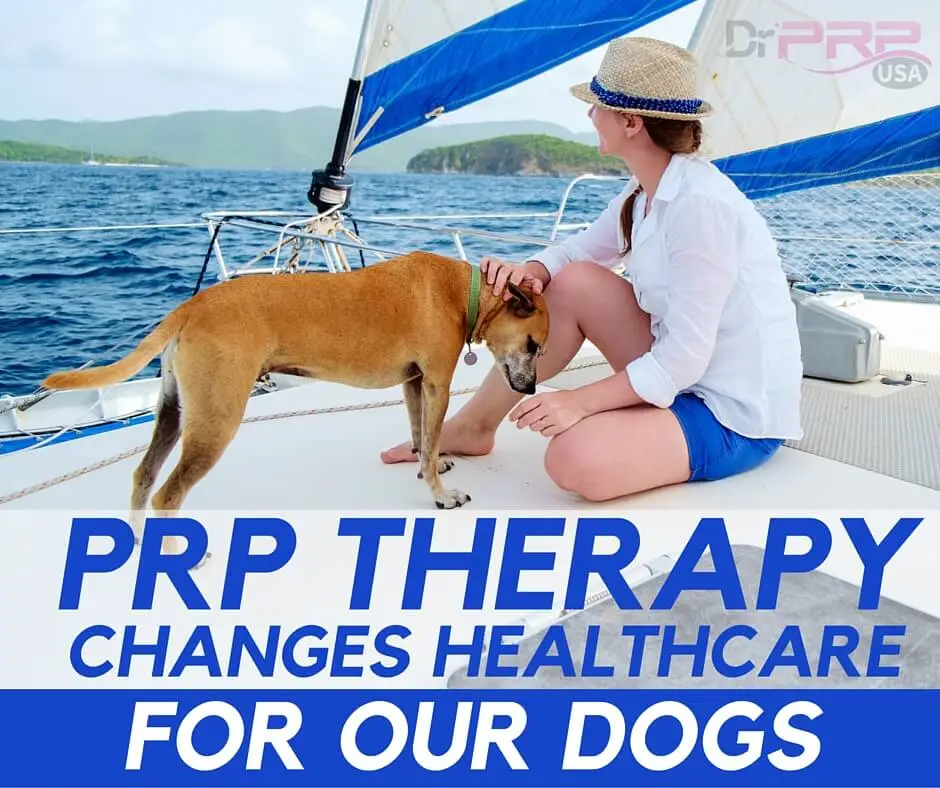| Item | Price | Qty | Total | |
|---|---|---|---|---|
 Loading Cart...
Loading Cart...How Revolutionary Platelet-Rich Plasma Injections For Dogs Are?

This revolutionary treatment, which accelerates all kinds of healing, is now a favorite among vets for treating our beloved canine friends. It not just heals, but in many cases it revolutionizes how older dogs live their life. If you’re an advocate for less invasive, safer, often less costly but effective, alternative treatment options, Platelet-Rich Plasma Injections are one of the rare kinds of treatment that fits the bill.
Why Platelet-Rich Plasma Injections For Dogs?
Treating dogs suffering with injuries to muscle, bone, or tendons has been by using Platelet Rich Plasma (PRP) injections has been shown to have a beneficial effect on recovery times, and the quality of the recovery.
Studies have shown that PRP promotes:
- Tendon healing (tenosynovitis).
- Pain reduction.
- Skin rejuvenation.
- Joint healing especially shoulder and ankle.
- Healing ligament ruptures and hyperextension injuries.
- Improving symptoms of osteoarthritis as in pet hip and elbow dysplasia.
- Reduced general inflammation.

Scientific Evidence Supports PRP for Dogs
Two studies, one published in 2011 and 2013 by the US National Library of Medicine (NCIB) and the Journal of Surgical Research (JSR) respectively, demonstrate the beneficial therapeutic effects of PRP when administered to dogs with musculoskeletal injuries.
The 2011 study set out to report on the concentration of blood cells and growth factors in the animals used in the study. They sampled the blood cell density in untreated dogs and compared it to that of dogs that had received PRP. They also compared a number of growth factors between dogs that had been given PRP treatments and those that had not. They found that platelet counts in the treated animals were higher than they were in non-treated animals. Not all growth factors were found to have increased. Two sets of growth factors remained the same in the test and control populations. Despite the lack of change in a few growth factors, others showed a significant increase and the overall improvement to the therapeutic outcome had improved for the test animal population.
In the 2013 study, similar methods were used except two extra test groups were added; a control group where saline was added to the PHP solution, and a fourth group in which a random distribution of young and old beagles were tested. The results of this study brought the researchers to conclude that PRP alters the expression of certain targeted genes during the early stages of graft remodeling and that the platelet rich plasma can promote reinnervation and revascularization. They believe this explains the beneficial enhancement effect of PRP on graft maturation.
Real Positive Outcomes
A study by Jeff Mayo DVM, Veterinary Medical Director of Ingeneron Inc. reports that his organization has been running studies on the effects of PRP on dogs. He says their studies have shown that they have proven that PRP is a safe and natural method to relieve the pain of injury or joint disease, promote healing and accelerate recovery time using the animal’s own blood. As a result of these findings, the Mobile Veterinary Surgical Services Serving of Seattle, WA are now confidently offering PRP treatments to the public in cases where the treatment is indicated.
The 2011 study mentioned above has been cited as conclusive evidence that that inflammation is reduced by PRP injection treatments and that enhanced healing results.
The KIM group (Kindred-Canines in Motion) reported in 2012 that PRP injections are safe and effective for most animals. KIM is now actively scheduling evaluations for possible candidates for PRP treatment of;
- Ligament sprains or tears
- Tendonitis
- Bursitis
- Osteoarthritis
- Elbow dysplasia
- Hip dysplasia
- Muscle tears
Combining PRP With Class 4 Cold Laser For Enhanced Results
Further studies have found that PRP can be combined with Cold Laser therapies for even better cellular regeneration. In fact, they are complementary and synergistic. A research project published in Lasers Medical Science concluded that the deposition of collagen type I (a major contributing factor in regeneration) was higher when treatment with PRP and a Class 4 Cold Laser were combined, promoting an even faster rate of regeneration in the affected tissues.

Limited Availability
And it looks like not all veterinary doctors are trained and equipped to use PRP treatments and Cold Laser therapy. As a result, owners who want their dogs to receive these treatments must go great lengths to seek out experienced practitioners. Fortunately, the awareness of these leading-edge treatments are spreading fast. Vets like Dr. R. Kraemer, who practices in orange county California and runs Vet4Bulldog.com, has expanded his offer for this groundbreaking combination to pet owners from anywhere in the State of California.
Why You Should Use Cold Laser and PRP
This combination works exceptionally well for joints and ligament healing which is a boon for older dogs. They are particularly affected by osteoarthritis and hence are badly in need for a combination treatment like this.
How laser therapy works
Cold laser therapy is a non-invasive treatment that uses coherent light to induce cellular regeneration and improve circulation. The infrared laser light interacts with tissues at the cellular level.
Benefits of the combination treatment
Cold Laser treatment increases cellular energy (ATP) to trigger an increase in cellular function, and health. It’s light based and when it comes in contact with the cell, metabolic activity increases. Hence the improvement in the mobility of nutrients across cell membranes. Which means your pet gets healthier faster than ever.
Is PRP and Laser Combination Right for Your Dog?
First of all, both PRP and Laser are noninvasive procedures. One uses growth factors in blood and the other uses light to stimulate cell regeneration and increase blood circulation. There isn’t any other perfect combination of treatments that I can think of.

Almost Zero Downtime
Both treatments may leave with soreness or inflammation, the typical side-effects of any injection/laser treatments. Under normal circumstances they are minor and will go away without any intervention. However, if symptoms are intense, icing the treatment area for 15 minutes 2-3 times a day for the first few days will help ease the pain and inflammation. Elderly animals and those with unusual conditions may require longer recovery times and closer attention.
Vets who’ve tried these report, that in most cases the results are almost instantaneous (as in obvious from day 1.) And as high as 80% of the animal patients treated with PRP have a noticeable improvement in their mobility within fewer than 10 days. Pets can resume normal activity in under a week: but may need recovery and rehabilitation therapies tailored to its condition, age, temperament, goals, and abilities.
Precautions for PRP Injections & Cold Laser
As far as precautions are concerned, there isn’t any to worry about. Except that for PRP, the animal patient needs to be off Anti-inflammatory medication at least a week prior to the treatment. Other than that, PRP comes with very few side effects. The same is the case for cold Laser therapy: zero known side effects. That is other than the obvious contraindications. Animals with any of the following conditions should not receive Cold Laser treatment.
- Cancer: malignant lesions should not receive Cold Laser treatment.
- Pregnancy: while there is no evidence animal fetuses can be harmed by PRP or Cold Laser therapy, clinicians are not yet able to rule out the possibility of harm to unborn animals.
- Thyroid: the possible effects of Cold Lasers on patients with thyroid conditions are unknown.

When Your Dog is Happy, You are Happy
PRP improves the quality of a dog’s life as well as the life of its owner. Older dogs and dogs with osteoarthritis can benefit tremendously from PRP as it is a low-intensity treatment.
With emerging knowledge of the positive effects on the health and well-being PRP and Cold Laser treatments have on our animals, the only things standing between many dogs and better health is a lack of public awareness and the availability of these treatments.
Questions to ask Your Veterinarian About PRP and Cold Laser
Although these treatments look simple and easy to the untrained eye, there’s more to it than what meets the eye. Experience counts. Proper training is a requirement. You don’t want your vet to “practice” these treatments on your pet. So do your due diligence. Ask your vet if he/she does these treatments on a regular basis.
One of the things you need to clearly verify with your vet is the number of treatments required. Depending on the condition of your pet, your vet may prescribe 3-5 treatments. And that’s perfectly okay. Because we’ve seen that repeated treatments often produce better results.
Also ask if they’ll use sedatives.


